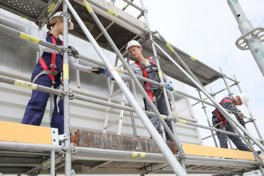Our client was working as a warehouse operative when she was hit twice by a metal trolley that her colleague had lost control of.
Accidents in the workplace occur due to a plethora of various factors, from poor maintenance of equipment to poorly trained staff. According to the Government Labour Force Survey, in 2022 alone, around 565,000 working people sustained an injury in the workplace, so it more common than you would think.
Following the accident, our client was examined, and it was found that she had suffered an injury to her lower back and was experiencing urinary tract symptoms. Our client was also enduring the psychological impact of being involved in such a sudden and unexpected accident.
Because of the injuries, she required additional care and assistance which she mainly got from friends and family members. They supported her with domestic chores, food preparation and shopping in the months following the accident.
Her employer (the Defendant) accepted primary liability for the accident.






